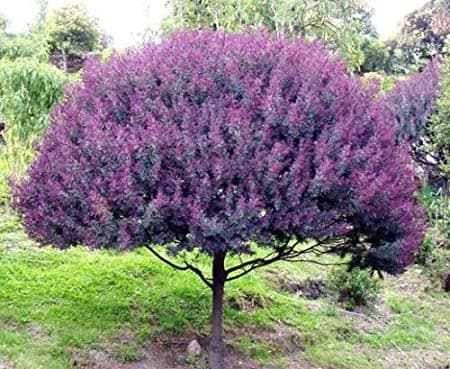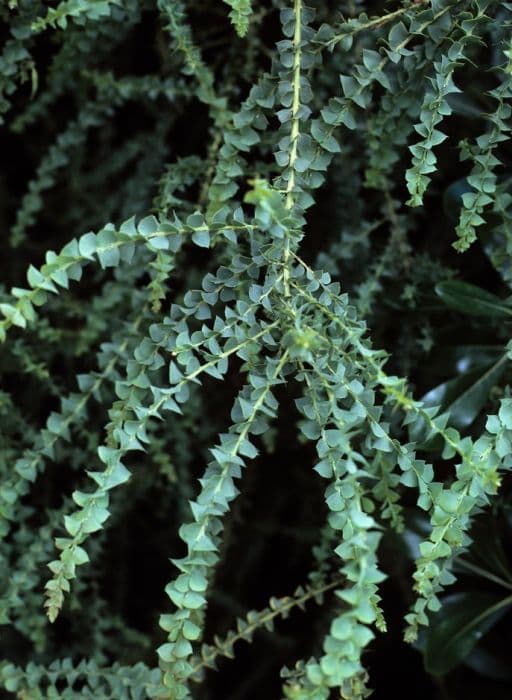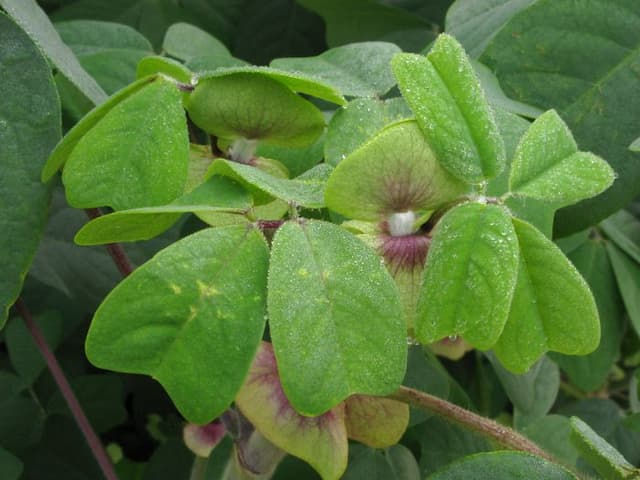Sweet pea 'Hannah's Harmony' Lathyrus odoratus 'Hannah's Harmony'

ABOUT
'Hannah's Harmony' is a compact annual climber to 1.1m, with faintly scented white flowers flushed and streaked with reddish-purple
About this plant
 Names
NamesFamily
Fabaceae.
Synonyms
Sweet Pea, Everlasting Pea, Eternal Pea, Fragrant Pea.
Common names
Lathyrus odoratus.
 Characteristics
CharacteristicsLife cycle
Annuals
Foliage type
Deciduous
Color of leaves
Green
Flower color
Varies
Height
6 feet (1.83 meters)
Spread
1 foot (0.30 meters)
Plant type
Climber
Hardiness zones
2
Native area
Mediterranean
Benefits
 General Benefits
General Benefits- Aesthetic Appeal: Sweet pea 'Hannah's Harmony' has vibrant and colorful flowers that can enhance the beauty of gardens and landscapes.
- Fragrance: The plant is known for its sweet fragrance that can add a pleasant aroma to the area it inhabits.
- Pollinator Friendly: The flowers attract bees, butterflies, and other pollinating insects, thereby supporting local ecosystems.
- Vertical Interest: This climbing plant can grow on trellises, fences, and other structures, adding height and dimension to garden spaces.
- Cut Flowers: The blooms of sweet pea make excellent cut flowers for indoor arrangements due to their attractiveness and scent.
- Easy to Grow: Sweet pea 'Hannah's Harmony' is considered relatively easy to cultivate, making it suitable for gardeners of various skill levels.
- Seasonal Color: With its seasonal blooms, the plant can provide a splash of color during its flowering period.
 Medical Properties
Medical PropertiesThis plant is not used for medical purposes.
 Air-purifying Qualities
Air-purifying QualitiesThis plant is not specifically known for air purifying qualities.
 Other Uses
Other Uses- Art and Craft Material: The colorful Sweet Pea flowers can be pressed and used in botanical art, such as creating natural details on greeting cards or bookmarks.
- Photography Subject: With their striking appearance, Sweet Pea flowers serve as an excellent subject for photographers, especially those specializing in macro and floral photography.
- Educational Tool: These plants can be grown in school gardens to help teach children about plant biology, life cycles, and the importance of pollinators.
- Dye Source: The petals of Sweet Pea flowers can be used to create natural dyes for fabric or paper, giving them a soft, unique coloring.
- Culinary Garnish: Although the seeds are toxic, the flowers of Sweet Pea can be used as an edible garnish to add a splash of color to dishes, after ensuring they haven't been treated with pesticides.
- Literary Inspiration: Sweet Pea flowers, with their colorful appearance and fragrant scent, can inspire poets and writers, often serving as a symbol in poetry and literature.
- Companion Planting: Sweet Peas can be used in the garden to climb on fences and trellises, providing a natural and attractive support for other climbing plants.
- Perfumery: While not extracted for commercial perfumes, the scent of Sweet Pea flowers can inspire homemade perfume concoctions or be used in potpourri.
- Seed Crafts: The seeds of Sweet Pea can be used in craft projects such as making seed mosaics or jewelry, as long as caution is exercised to avoid consumption.
- Wedding Decor: Due to their appealing look and scent, Sweet Pea flowers are often used in wedding bouquets, centerpieces, and venue decorations.
Interesting Facts
 Feng Shui
Feng ShuiSweet pea is not used in Feng Shui practice.
 Zodiac Sign Compitability
Zodiac Sign CompitabilitySweet pea is not used in astrology practice.
 Plant Symbolism
Plant Symbolism- Pleasure: Sweet peas, which is the common name for Lathyrus odoratus, often symbolize pleasure or blissful pleasure due to their delightful fragrance and attractive blossoms.
- Goodbye: In the language of flowers, sweet peas can signify a farewell or goodbye, possibly because they can be given when someone is leaving or parting ways.
- Thank you: Sweet peas can express gratitude, making them a polite and thoughtful way to say "thank you" for a kind deed or favor.
- Delicate Pleasures: Their delicate appearance and scent can represent the enjoyment of delicate or fleeting pleasures in life.
- Blissful Comfort: They may also be associated with comfortable enjoyment, perhaps due to their role in creating a pleasing and cozy home environment.
 Water
WaterSweet pea 'Hannah's Harmony' requires consistent moisture, so it should be watered deeply once or twice a week, allowing the soil to dry out slightly between waterings. It's best to avoid overhead watering to prevent disease; instead, water at the base of the plant. During the growing season, aim for at least one inch of water per week, which is roughly 0.623 gallons over the area of the plant's root system. In hot and dry conditions, you might need to water more frequently, keeping an eye on the soil moisture to determine when additional watering is necessary.
 Light
LightSweet pea 'Hannah's Harmony' thrives in full sun to partial shade. The best spot for this plant is one where it receives at least 6 hours of direct sunlight each day, though it can tolerate some light afternoon shade. Avoid deeply shaded areas, as insufficient sunlight can lead to fewer blooms and a leggy plant.
 Temperature
TemperatureSweet pea 'Hannah's Harmony' prefers cooler temperatures and grows best when daytime temperatures are between 55°F and 65°F. It can tolerate a minimum temperature of about 25°F for brief periods but sustained freezing temperatures can damage the plant. Maximum temperature tolerance is around 80°F, after which the plant may cease to flower and could become stressed.
 Pruning
PruningPrune sweet pea 'Hannah's Harmony' to encourage bushiness and more blooms. Pinch back the tips when the plant is 4 to 6 inches tall. Deadheading, or removing spent flowers, promotes continuous blooming throughout the season. The best time for heavy pruning is late winter or early spring before new growth begins.
 Cleaning
CleaningAs needed
 Soil
SoilSweet pea 'Hannah's Harmony' thrives in rich, well-draining soil with a pH that is neutral to slightly alkaline, around 7.0 to 7.5. The best soil mix can be made by combining equal parts of loam, peat moss, and perlite or coarse sand to ensure good drainage while retaining adequate moisture.
 Repotting
RepottingSweet pea 'Hannah's Harmony' is typically grown as an annual and therefore does not usually require repotting. If started in containers, they should be transplanted to their final growing location once they have developed strong roots and are large enough to handle the transplant process.
 Humidity & Misting
Humidity & MistingSweet peas, including 'Hannah's Harmony', prefer moderate humidity levels. Although they are adaptable, the ideal range is around 40-60%. It's crucial to ensure good air circulation to prevent fungal problems especially when grown in regions with higher humidity.
 Suitable locations
Suitable locationsIndoor
Use rich soil, ensure ample sunlight, and keep at cooler temps.
Outdoor
Plant in full sun, rich soil, and provide sturdy support for climbing.
Hardiness zone
2-11 USDA
 Life cycle
Life cycleSweet pea 'Hannah's Harmony' begins its life as a seed, often sown in late winter to early spring. Upon germination, the seedlings emerge and develop into vigorous climbing vines with leaves and tendrils that seek support. The plant then enters its vegetative stage, characterized by the growth of stems and foliage. As the weather warms, it transitions to the flowering stage, producing fragrant, colorful blooms that are often cut for bouquets. Following pollination, the flowers develop into seed pods, and once mature, the seeds can be collected for the next planting season. Through the year, particularly in temperate climates, the plant completes its annual cycle, dying back after seed production to complete its life cycle.
 Propogation
PropogationPropogation time
Spring
The Sweet Pea 'Hannah's Harmony' is commonly propagated through seeds. The most popular method for propagating this plant involves sowing the seeds directly into the soil in late winter or early spring, allowing the cold temperatures to naturally stratify the seeds, which breaks their dormancy. To aid germination, some gardeners recommend nicking the seed coat or soaking the seeds in water for 24 hours before planting. Plant the seeds about 1 inch deep and space them 2 to 3 inches apart in well-draining soil. Ensure they are in a sunny location and keep the soil moist until germination, which typically occurs within 7 to 14 days. Once the seedlings have established, thin them to about 5 to 6 inches apart to give each plant ample room to grow.









